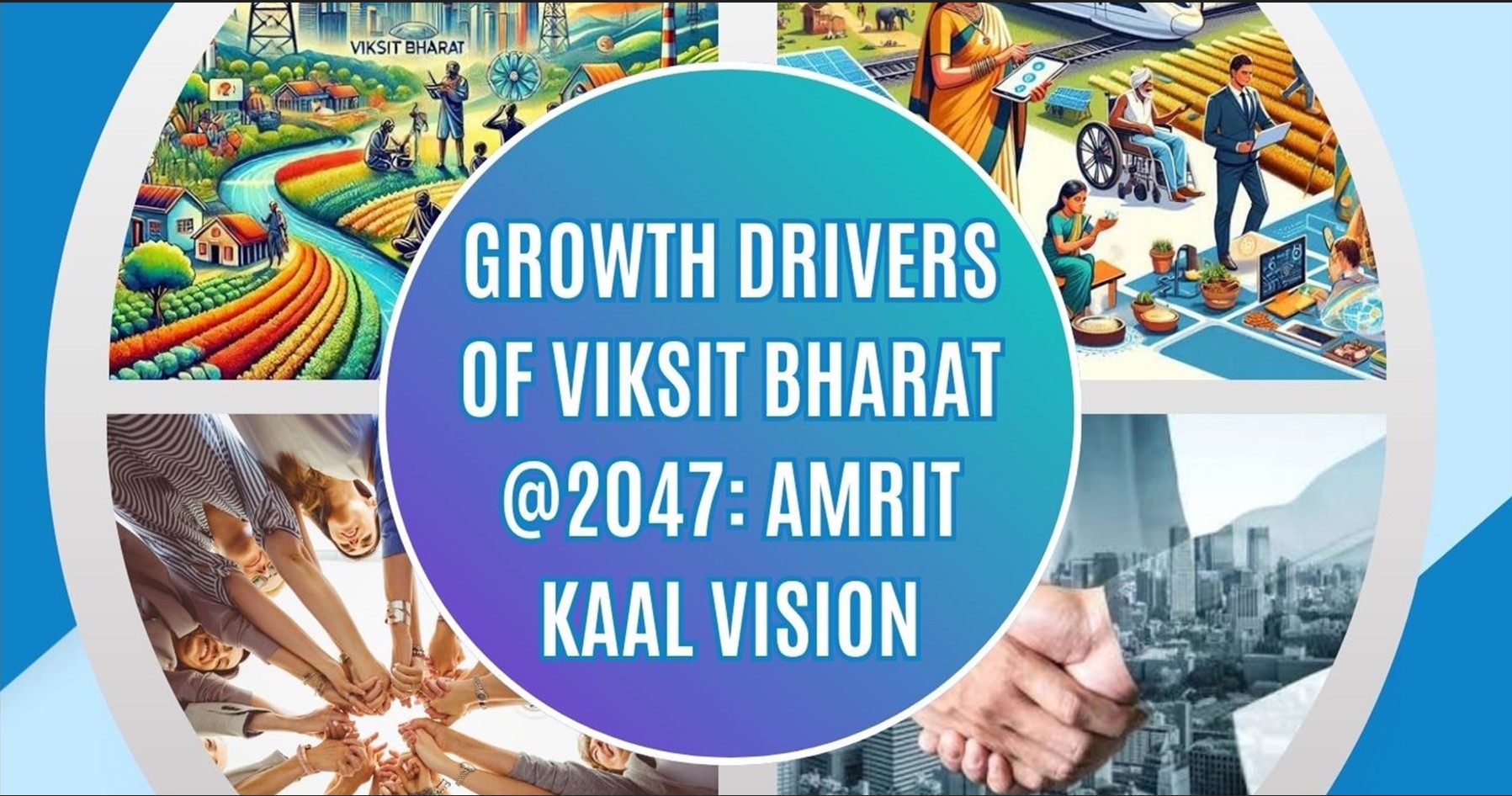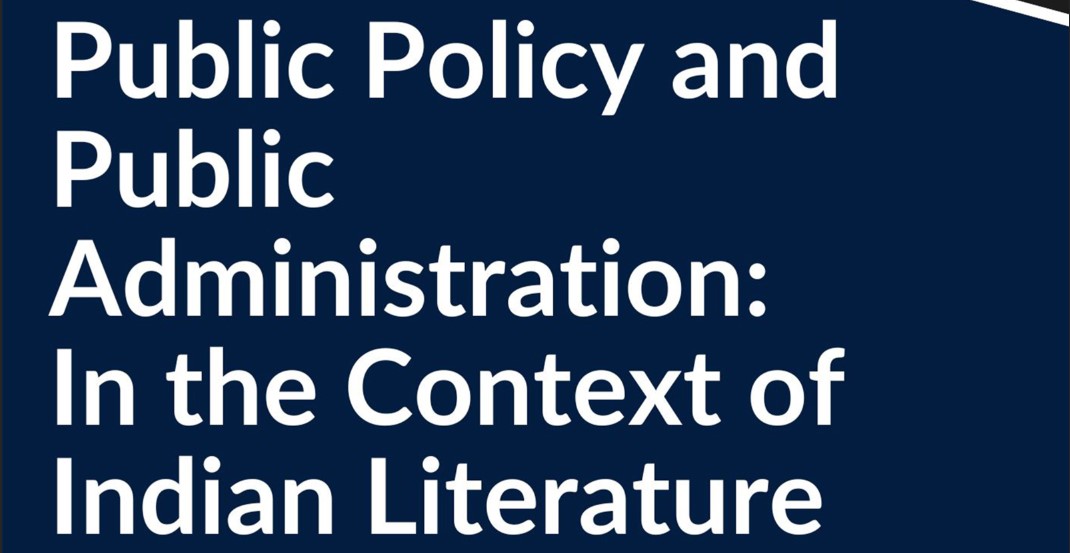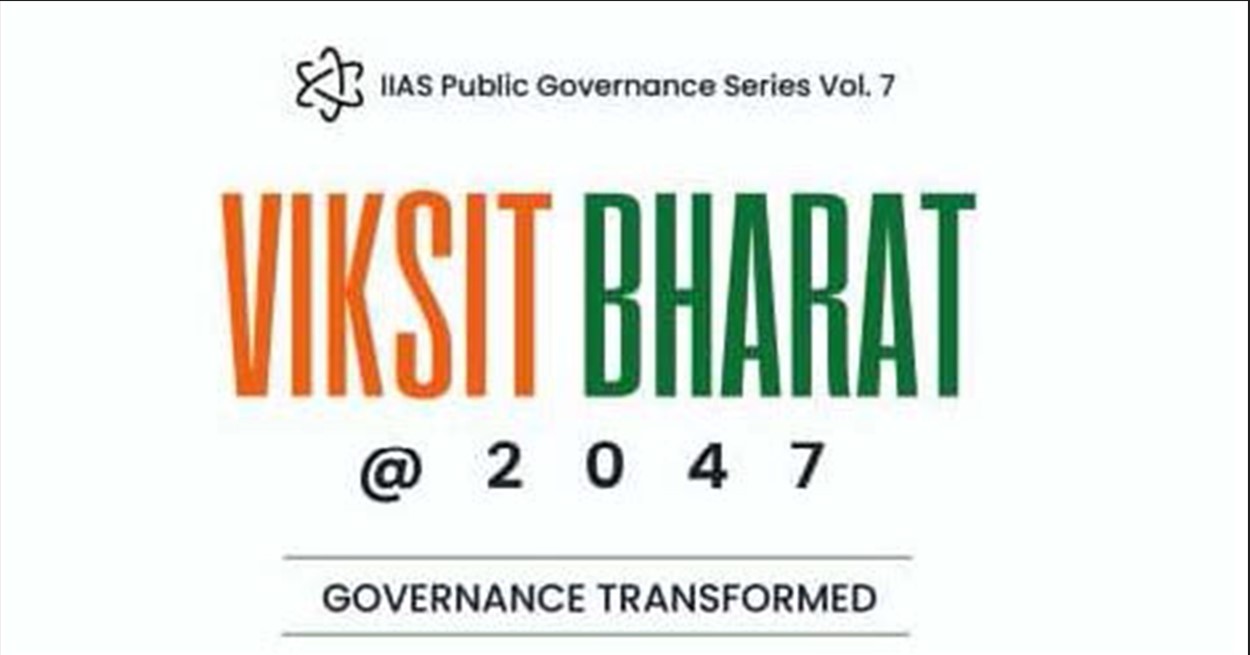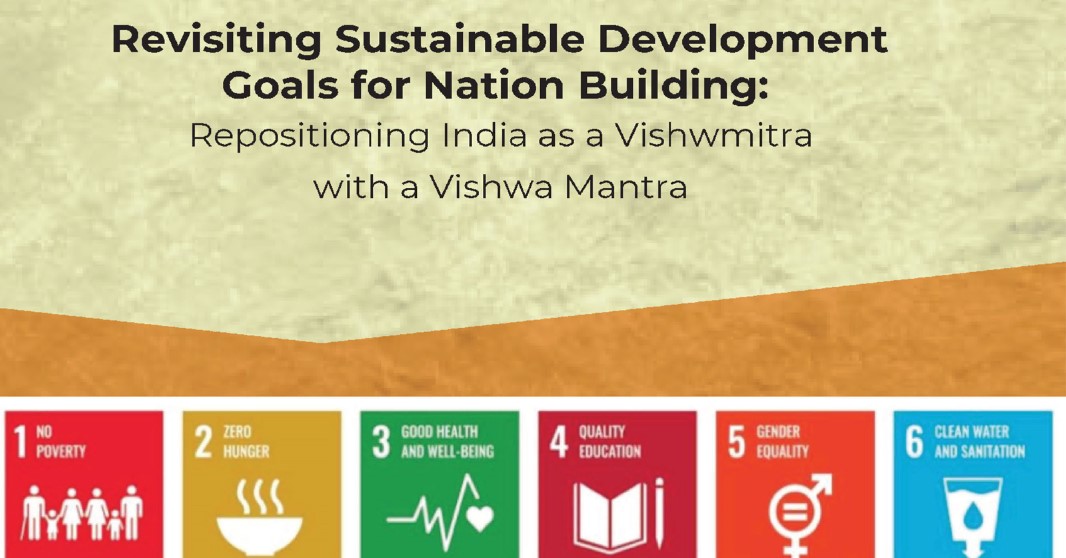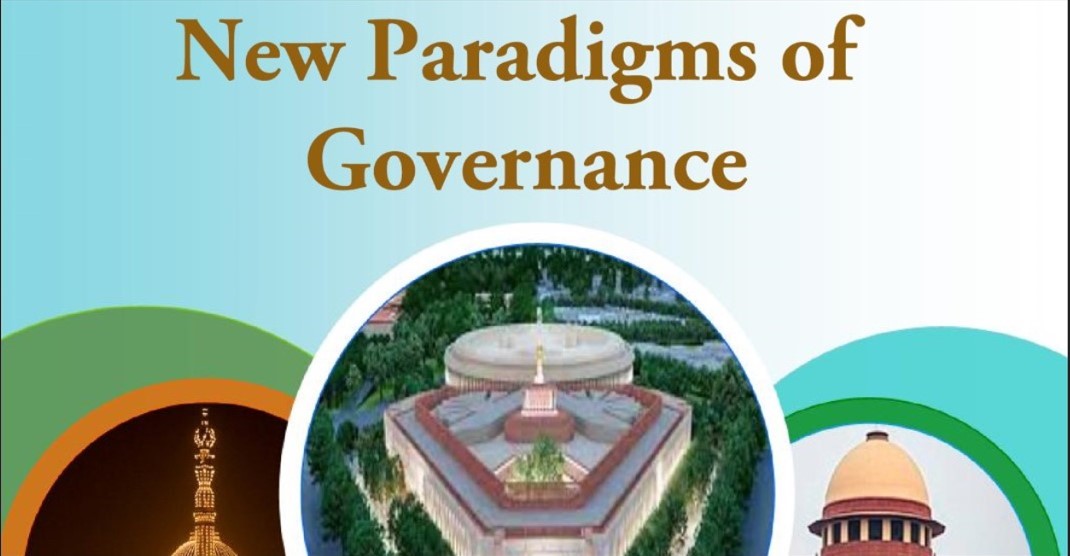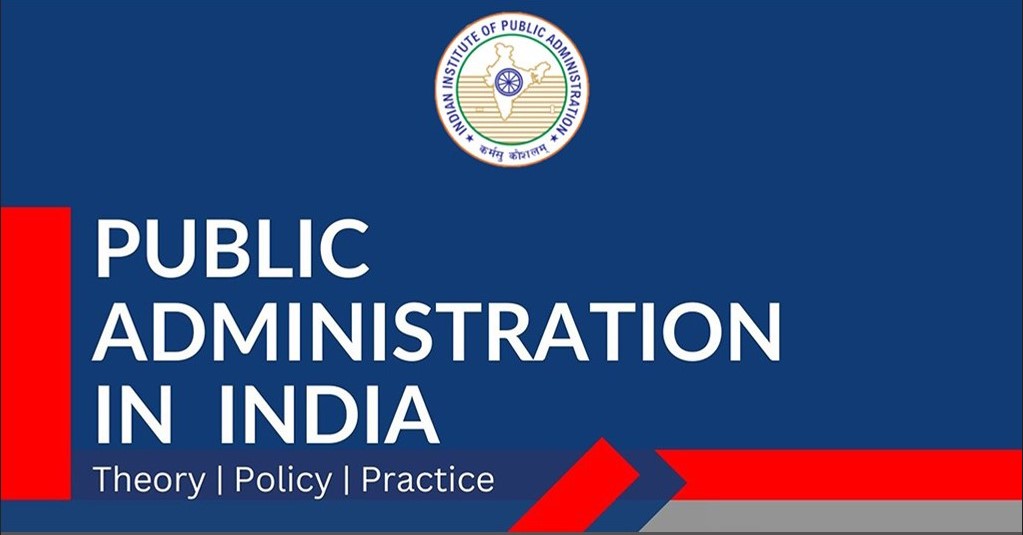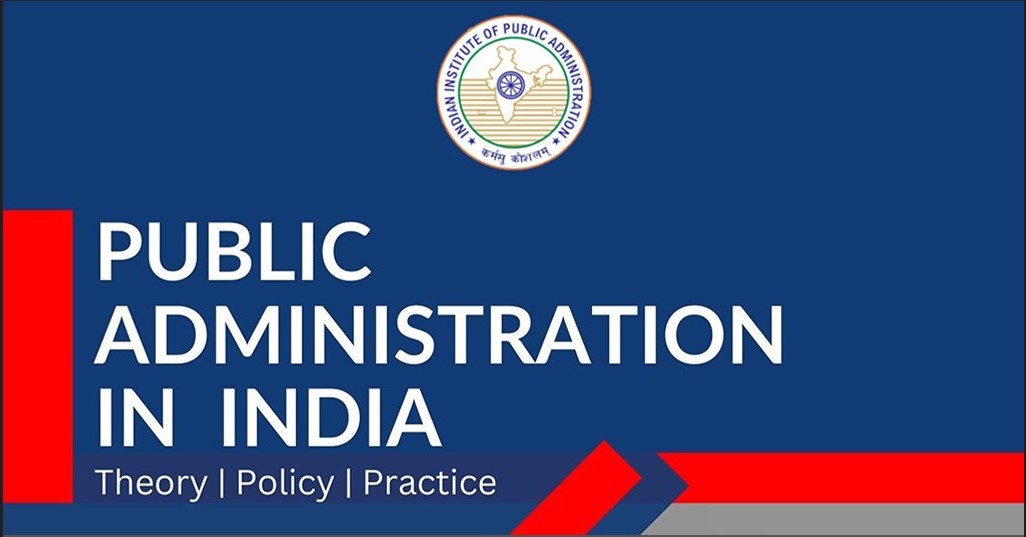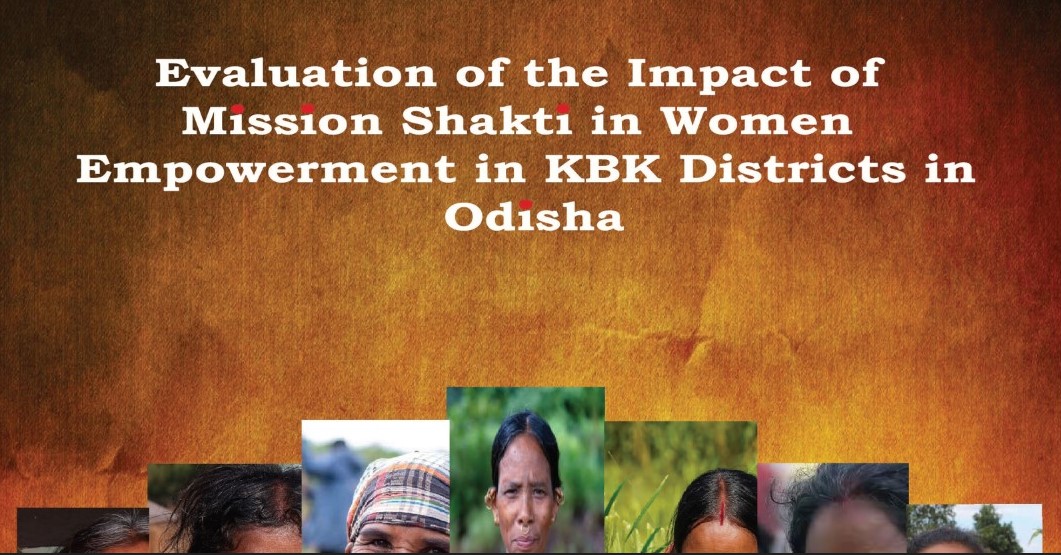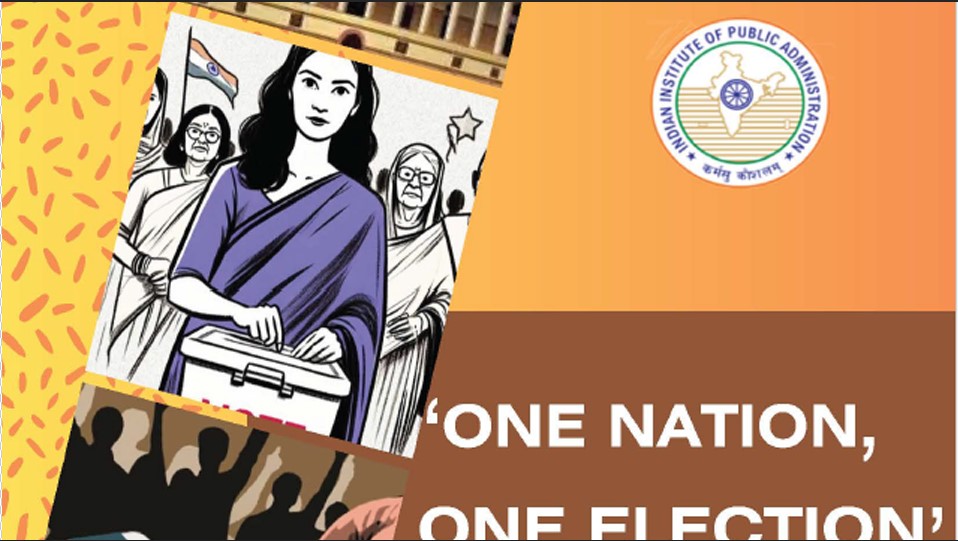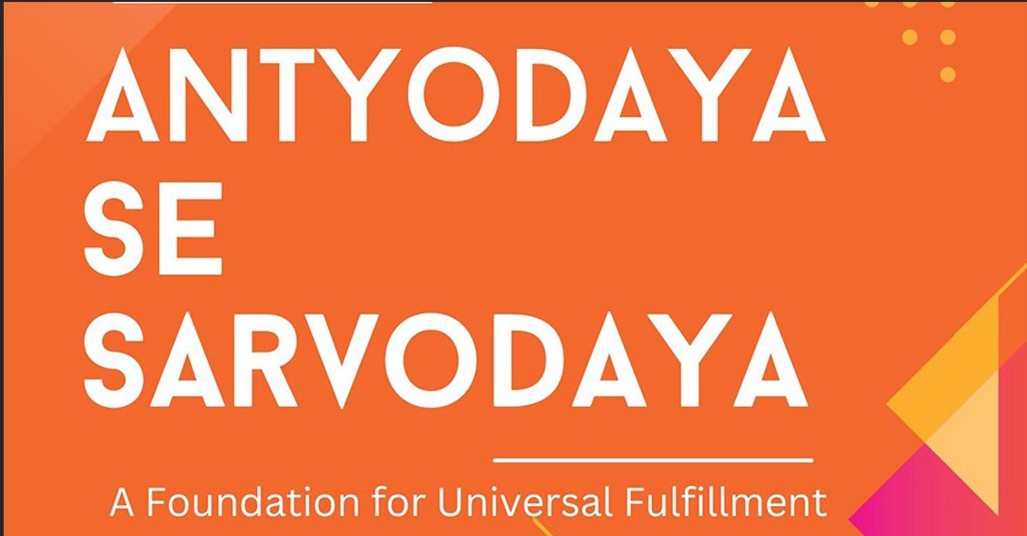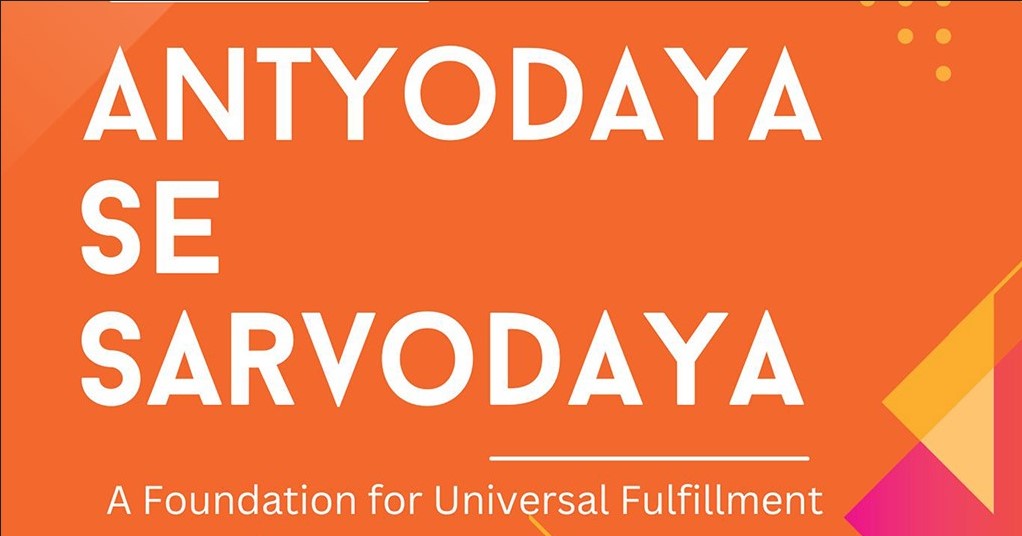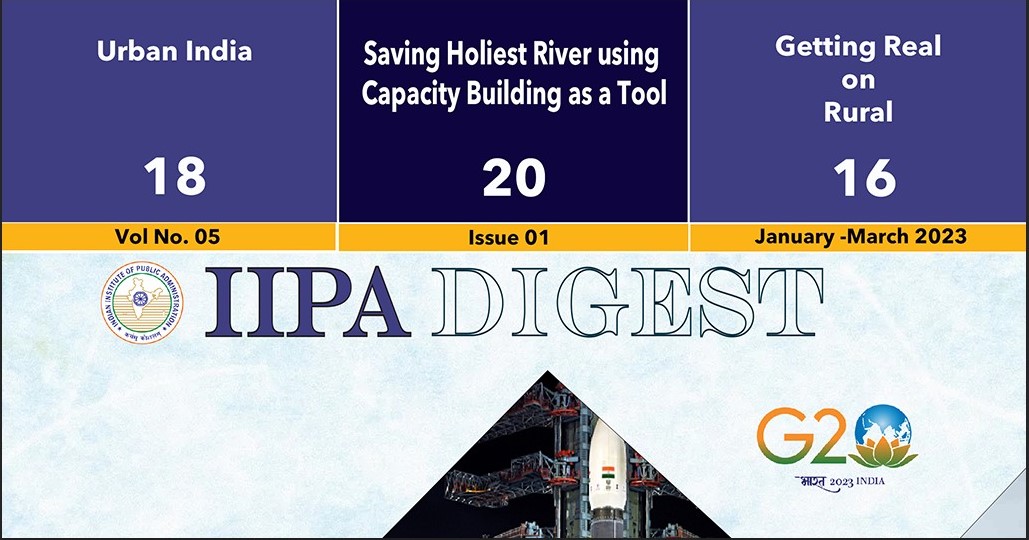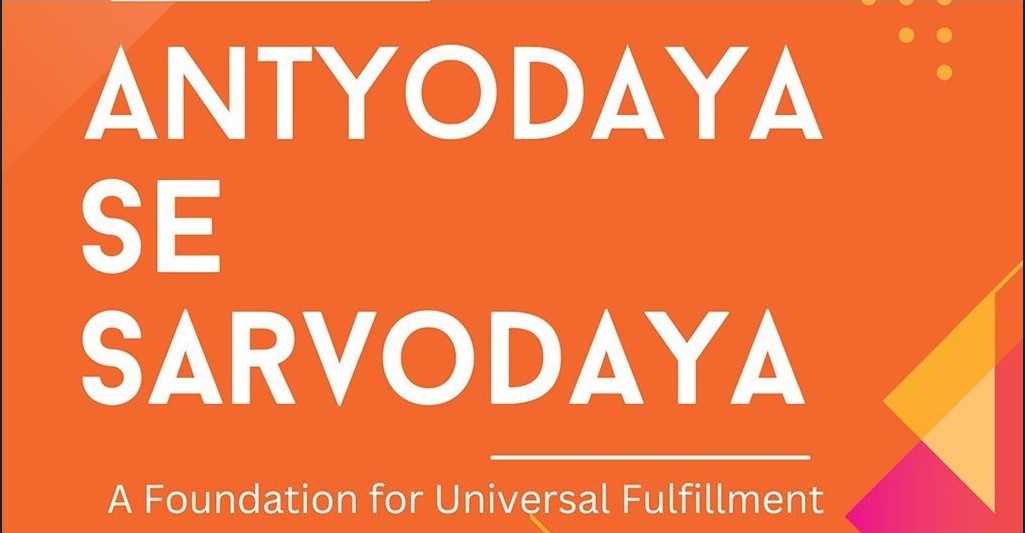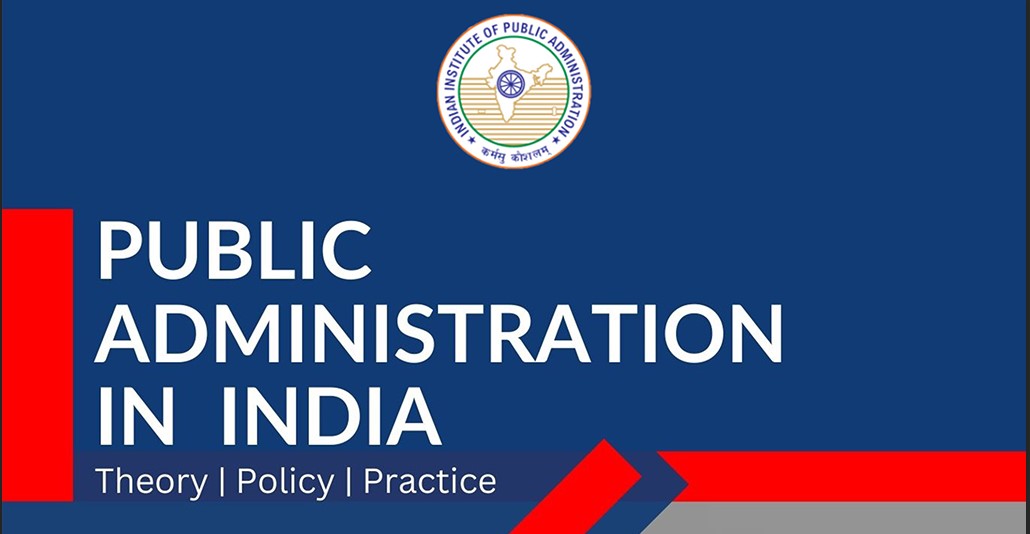Training at IIPA: Past, Present & Future
Training and development are necessary to improve employies skills and knowledge, boost productivity and efficiency and enhance job satisfaction. This investment in employees helps organizations adapt to technological changes, meet business goals, fill skill gaps, reduce costs, and maintain a competitive edge in a dynamic market. It also fosters employes loyalty, reduces turnover, and develops future leaders. Training is a systematic process of developing skills, knowledge, and competencies in individuals to enhance their performance and achieve specific goals. It involves a structured approach to learning, where participants acquire new skills, knowledge, and attitudes to improve their job performance, adapt to changing environments, and advance in their careers.
Key Aspects of Training
• Skill Development: Enhancing technical, functional, or soft skills to perform specific tasks or roles.
• Knowledge Acquisition: Imparting knowledge and understanding of concepts, theories, and best practices.
• Competency Building: Developing competencies that enable individuals to perform effectively in their roles.
• Performance Improvement: Enhancing job performance, productivity, and efficiency.
Types of Training
• On-the-job training: Learning by doing, where participants learn while performing their job tasks.
• Classroom training: Traditional instructor-led training in a classroom setting.
• Online training: Self-paced learning through digital platforms, webinars, or e-learning modules.
• Simulation-based training: Learning through simulated environments or scenarios.
Benefits of Training
• Improved Performance: Enhanced skills and knowledge lead to better job performance.
• Increased Productivity: Efficient use of skills and knowledge leads to increased productivity.
• Career Advancement: Training can lead to career growth and advancement opportunities.
• Adaptability: Training helps individuals adapt to changing environments and technologies.
• Peer Learning: Fosters lifelong bonds which are helpful not only in the social development but also helps in understanding the work environments and better human relations.
Effective Training
Training and development initiatives can include workshops, on-the-job training, mentoring, role-playing, computer-based training, and formal courses. Effective programs involve identifying training needs, setting specific goals, choosing appropriate methods, delivering the training, and evaluating its outcomes to ensure continuous improvement.
• Needs Assessment: Identifying training needs and gaps.
• Clear Objectives: Defining clear learning objectives and outcomes.
• Engaging Content: Using relevant, interactive, and engaging content.
• Evaluation: Assessing training effectiveness and impact.
By understanding the principles and benefits of training, organizations can design and deliver effective training programs that enhance the skills, knowledge, and performance of their employees.
IIPA at a Glance
Public Administration has always implied Government when ‘public’ actually means community or people. In the post-colonial, post-independence paradigm of the early 1950s, Public Administration really meant providing service to the people by the State apparatus using the ground rules of justice, ethics and fair-play. As such, in order to change the colonial mindset of the post-independence Civil Services and make it more people-centric, IIPA was established as an independent ‘Think-Tank’ on 29th March 1954 based on the recommendations of a survey carried out in 1953 by Prof. Paul H. Appleby, Dean, Maxwell School of Citizenship and Public Affairs, Syracuse University, New York and a Consultant with the Ford Foundation, invited to advice on the subject, by the Government of India. Great emphasis was placed on ‘de-colonialising’ the mind-set of administration, making it more people-oriented. Enhancing leadership and managerial qualities on the one hand and developing a service-orientation on the other are the thrust areas of the Institute’s education and training activities. Its faculty is involved with research work mainly to simplify procedures and suggest policy changes to ensure improved delivery of public services.
Indian Institute of Public Administration was created under the Societies Act of 1860.The Institute was formally inaugurated by the first Prime Minister of India, as the first President of the Society, on March 29, 1954 in New Delhi. The Institute has been set up to equip the public servants with domain knowledge, functional skills, and behavioural competencies required for managing the task of governance. The Institute provides technical skills of management, human skills for coordination roles and conceptual skills for taking up leadership roles in public policy planning and execution. In its effort to enhance the leadership, managerial, and administrative capabilities of the executives in government and public sector enterprises, the Institute works in close collaboration with national and international organisations. The major activities of the Institute are: Training, Research, Advisory and Consultancy services, and Information dissemination and exchange. The rising bottom up expectations of the citizenry, complexities of management and the current issues relating to economic restructuring and ensuring the measure of stability and progress at all levels have created pressure for improvements in the training methodology for enhancing professional capability through training programmes. The Institute, needless to emphasise, is alive to the developments taking place in the area of training technology at the global level and the policy changes at the national level. This perspective plan for training of the Institute is a manifest evidence of the Institute’s concern for efficient and effective training in Public Administration.
Vision: Inspiring Excellence in Governance
Building upon the vision of its founding fathers, Indian Institute of Public Administration (IIPA) aims to be one of the world’s leading academic centres of thought and influence on public governance, policies and implementation so that public governance systems are more responsive to human needs and aspirations and aligned with human values. To create an enabling environment for the development and management of human resources of the government for efficient, effective accountable responsive transparent & ethical governance, IIPA has been a pivotal institution in India's governance landscape, focusing on training, research, and information dissemination in public administration. By training in an academic institution like IIPA, individuals can gain valuable skills, knowledge, and networks, enhancing their career prospects and contributing to societal development. The Indian Institute of Public Administration (IIPA) has undergone a significant transformation in its training programs since its establishment in 1954. Here's a glimpse into its journey:
Major Training Areas
The Indian Institute of Public Administration (IIPA) caters to a wide range of major training areas of expertise, primarily to government officials from India and abroad. These include governance, public administration, finance, leadership, management, legal and policy frameworks, digital transformation, and other domains relevant to administration.
• Governance and Public Administration: Areas such as dynamics of public administration, good governance, service delivery, and decentralization form a core of IIPA offerings.
• Finance and Economic Management: Modules include public finance, financial management, and economic development for administrators.
• Law, Policy, and Regulatory Frameworks: Training programs address administrative law, policy research, regulatory frameworks for governance technology, and consumer protection laws.
• Leadership, Communication, and Management: Courses instil leadership skills, problem-solving, project management, operations management, and human resource management.
• Digital Governance and Analytics: These include digital transformation, data analytics for public administrators, Cyber Security strategy, and policy-making.
• Special Sectoral Focus: IIPA conducts specific training in areas such as rural and urban governance, climate smart governance, disaster risk reduction, tribal and gender development, development and management of infrastructure projects, and national security
• International Relations and Trade: Courses cover international trade, commerce, and contemporary international relations challenges.
• Research and Methodology: Essential training in research methods and methodology is provided for evidence-based administration.
• Participants are from Senior and mid-level officials from All India Services (IAS, IPS, IRS), Central Civil Services, State Governments, Defence Services, and officers from abroad.
• Climate Smart Governance, Urban development, Water Safety and Security, Cooperative Federalism ,Agriculture Insurance ,Namami Gange Project trainings like capacity building of stakeholders in districts ,remote parts of Ganga basin are few other areas in focus.
Major Ministries /Departments/Services/Sectors of Training
The IIPA conducts training for a broad range of ministries, departments, services, and sectors, primarily focusing on personnel serving in national and state administrations, defence, technical services, and allied areas.Major Ministries and Departments are: Ministry of Personnel, Public Grievances and Pensions (i.e Department of Personnel and Training) ,Ministry of Finance, Ministry of Panchayati Raj, Ministry of Home Affairs, Ministry of Urban Development, Ministry of Defence (including Indian Army, Air Force, Coast Guard).Other central government departments and significant state government agencies regularly nominate officers for IIPA’s programs.
• IIPA also runs special induction and orientation trainings for lateral entrants to government positions and elected local bodies such as Sarpanches and Panchayati Raj representatives.
• Central Civil Services: Indian Revenue Service (both Income Tax and Customs and Central Excise), Indian Audit & Accounts Service, Indian Defence Accounts Service, Indian Defence Estate Service, IP&TAF Service ,Indian Postal Service , Indian Trade Service and others.
• Technical and Defence Services: Indian Army, Indian Air Force, Indian Coast Guard, other technical cadres.
• Senior officers from state service cadres
• State Civil Services: Senior officers from state service cadre like Mizoram, Odisha, Gujarat, Bihar, Sikkim, Uttar Pradesh, Manipur , Maharashtra, Haryana, UT of Ladakh, Assam, UT of Jammu & Kashmir, Delhi, Madhya Pradesh, Arunachal Pradesh, Tamil Nadu, Himachal Pradesh, Punjab .
• Foreign Civil Services: Training is also delivered to officials from Afghanistan, Bangladesh, Sri Lanka, Nepal, Maldives, Vietnam, Mongolia, Morroco and several African , Latin American and Pacific Island Countries.
• Following Sectors are covered: Governance and Public Policy, Urban and Rural Development, Water Resources and Ganga Rejuvenation, Disaster Management, Digital Transformation and Cyber Security, Finance, Public Administration, Human Resource, and Infrastructure Development
• MoUs with different departments/ministries/institutions-national and international. The Indian Institute of Public Administration (IIPA) has signed numerous Memorandum of Understanding (MoUs) with national and international departments, ministries, and institutions, supporting collaboration in training, research, and academic exchange.
Here is an overview of IIPA’s journey:
Early Years (1954-1970s)
• Founded on March 29, 1954, under the Societies Act of 1860, with the objective of promoting public administration and governance in India
• Indian School of Public Administration functioned from 1954-offered Masters Diploma in Public Administration (MDPA) programme from 1958 -1967.
• The first APPPA Programme (10 month long duration flagship programme of IIPA) was inaugurated on September 1, 1975 and is continuing since then.
• IIPA was set up as an autonomous academic institution of national eminence for training, research, and information dissemination.
• Focus on equipping public servants with domain knowledge, functional skills, and behavioural competencies required for managing governance.
Expansion and Diversification (1980s-1990s)
• IIPA started conducting training programs for government officials, focusing on areas like policy analysis, public finance, management and leadership development.
• Collaborations with international organizations like the Ecole National d' Administration, France, and the Korea Institute of Public Administration, Bangladesh Public Administration Centre, Morocco and others.
• Emphasis on capacity building, research, and advisory services to support governance reforms.
Modernization and Digitalization (2000s-present)
• IIPA has adapted to the changing needs of governance, incorporating modern training methodologies and technologies
• Development of digital modules on topics like disaster risk reduction, public policy response, and climate-smart governance
• Online learning materials and resources, including the Advanced Professional Programme in Public Administration (APPPA)
• Conducting training programs for various government departments, ministries, and public sector enterprises
Key Achievements
• Established in 1954, IIPA has trained over 157065 government officials from India and abroad, showcasing its commitment to capacity building.
• Total no. of training programmes done by IIPA since 1959 to till now is 4052. (as on September 2025)
• Indian Institute of Public Administration is an ISO 9001:2015 certified Institution providing training, research, and information on public administration.
• In 2023, the Capacity Building Commission (CBC) certified IIPA as an "Ati Uttam" category Institute under its National Standards. This accreditation validates the quality of IIPA's programs and its overall standing as a premier training institution for government officials.
• Conducted numerous training programs, including the flagship Advanced Professional Programme in Public Administration (APPPA). Successfully conducted 50 APPPA’s (Advanced Professional Programme in Public Administration) 51st batch is ongoing since July 2025.
• Trained over 1700 participants in the APPPA programme which has been attended by senior officials from All India Services, Central Civil Services, and Defence Services.
• Conducted International training programmes (ITEC and other International Training) for Afghanistan, Nepal, Bhutan, Maldives, Sri Lanka, Bangladesh, Myanmar, Cambodia, Fiji, Mauritius, Cuba, Tajikistan, Democratic Republic of Congo, Comoros, Nigeria, Armenia, Trinidad & Tobago, Oman, Zimbabwe, Kenya, Namibia, Botswana, Uzbekistan, Tunisia, Chile, Ethiopia, Zambia, Ghana, Indonesia, Kingdom of Eswatini (formerly Swaziland), Syria, Uganda, Albania, Tanzania, Cameron, Lesotho, Liberia, Colombia, Egypt, Kyrgyzstan, Russia, Mongolia, Vietnam, Mali, Kazakhstan, Philippines, Cote D’Ivoire, South Sudan, South Africa, Laos, Mozambique, Seychelles, Niger, Gambia, Madagascar, Burundi, Belarus, Turkey, Iraq, Dominican Republic, Guinea, Mexico, Papua New Guinea, Belize, Argentina, Guatemala, Azerbaijan, Germany, USA. Central Tibetan Administration and others.
• IIPA caters to the field of training ,research and a major think tank to a large number of Government of India ministries, departments and other organizations-Ministry of Personnel, Public Grievances and Pensions, National e-Governance Division (Ministry of Electronics and Information Technology), MHA, Ministry of Jal Shakti, Ministry of Social Justice and Empowerment, Supreme Court, Ministry of Housing and Urban Affairs, ICFRF Dehradun, DoT, RAKNPA (Dept of Posts), DoPT, NDMA, NTIPRIT (DoT), Ministry of Tribal Affairs, Registrar General and Census Commissioner of India, DPE, NITI Aayog, CPWD, CBSE, Ministry of Road Transport and Highways, DGCA, NMDC, CAT, Ministry of Defence, Ministry of Youth Affairs and Sports, Ministry of Statistics and Programme Implementation, Ministry of Panchayati Raj, Ministry of Labour & Employment, KVS Sangathan (Ministry of Education), Indian Coast Guard, Ministry of Environment, Forest & Climate Change, Ministry of Finance, DST, Department of Atomic Energy, UIDAI, NABARD, NAFED, Central Pollution Control Board, NVS (Ministry of Education), Dept of Posts, FCI, National Commission of Women (NCW), Ministry of Consumer Affairs, ICSSR, Ministry of Parliamentary Affairs, Ministry of Commerce (ITPO), Ministry of Health & Family Welfare, DRDO, BPR&D, MEA, Ministry of Railways, Indian Audit & Accounts Service, Department of Space and ISRO, Indian ,Legal Services, Department of Rural Development, Ministry of Agriculture, Town and Country Planning Organisation, Central Water and Power Commission, Central Electricity Authority, Central Social Welfare Board, The Office of the Central Provident Fund Commissioner (Ministry of Labour&; Employment) etc
• IIPA’s state collaborations in the field of training ,research are with Government of Bihar, Government of Gujarat, Varanasi Municipal Corporation, Government of Odisha, Government of Mizoram, Government of Maharashtra, Municipal Corporation Gurugram (Haryana), UT of Ladakh, Government of Assam, UT of Jammu & Kashmir, Government of NCT of Delhi, High Court (UP), Srinagar Municipal Corporation, Government of Madhya Pradesh, Government of Arunachal Pradesh, Government of Sikkim, Government of Tamil Nadu, Government of Himachal Pradesh, Government of Uttar Pradesh, Government of Manipur, Industrial Development Corporation of Orissa, Government of Pondicherry, MP Electricity Board, Irrigation Department (Government of UP), Irrigation Department (Government of Bihar), Irrigation Department (Government of Madhya Pradesh), Industrial Development Corporation of Orissa, Gujarat Municipal Finance Board, Sardar Patel Institute of Public Administration, Directorate of Primary &; Secondary Education(Rajasthan).
• IIPA’s collaborations in diverse fields are also with Central and State PSU-A.P State Financial Corporation Limited, A.P State Road Transport Corporation Limited, Air India Express Limited, Artificial Limbs Mfg. Corporation of India, Balmer Lawrie & Co. Limited, Balmer Lawrie Investments Limited, Bangalore ,Electricity Supply Co. Limited, Bharat Coking Coal Limited, Bharat Dynamics Limited, Bharat Earth Movers Limited, Bharat Heavy Electricals Limited, Bharat Sanchar Nigam ,Limited, Braithwaite Burn & Jessop Construction Company ,Limited, Cement Corporation of India Limited, Central Mine ,Planning & Design Institute Limited, Chamundeshwari ,Electricity Supply Corporation Limited, Coal India, Cochin Shipyard Limited, Container Corporation of India Limited ,(CONCOR), Dredging Corporation of India Limited, Electronics Corporation of India Limited, Engineer Instrumentation Limited, Ferro Scrap Nigam Limited, Food Corporation of India, GAIL (India) Limited, Garden Reach Shipbuilders & Engineers Ltd, Goa Shipyard Limited, Grid Corp. of Odisha Limited (GRIDCO), Hindustan Aeronautics Limited, Hindustan Copper Limited, Hindustan Organic Chemicals Limited, Hindustan Petroleum Corporation Limited HPCL), India Trade Promotion Organisation, Indian Bureau of Mines (IBM), Indian Oil Corporation Limited (IOCL), Indian Railway Finance Corporation Limited, Indian Renewable Energy Development Agency Limited, Indian Telephone Industries Limited, Instrumentation Limited, IRCON International Limited, IREL (India) Limited, Karnataka Power Transmission Corporation Limited, KIOCL Limited, Konkan Railway Corporation Limited, Kudremukh Iron Ore Company Limited, Life Insurance Corporation of India Limited, Mangalore Refinery & Petrochemicals Limited, MECON Limited, Metal Scrap Trade Corporation Limited, Metals and Minerals Trading Corporation Limited, Ministry of Road Transport & Highways, GoI, Mishra Dhatu Nigam Limited, Mumbai Port Trust, National Aluminum Company, National Backward Classes Finance & Development Corporation, National Fertilizer Limited, National Fertilizers Limited, National Film Development Corporation Limited, National Handicapped Finance and Development Corporation, National Handloom Development Corporation Limited, National Hydroelectric Power Corporation Limited, National Mineral Development Corporation Limited, National Minorities Development & Finance Corporation, National Scheduled Tribes Finance & Development Corporation, National Small Industries Corporation Limited, National Thermal Power Corporation of India, Neyveli Lignite Corporation Limited, North Eastern Electric Power Corporation Limited, Nuclear Power Corporation of India Limited, Odisha Hydro Power Corporation Limited, Odisha Mining Corporation Limited, Oil and Natural Gas Corporation Limited (ONGC),Power Finance Corporation Ltd, Power Grid Corporation of India Limited, Projects & Development India Limited, Railtel Corporation of India Limited, Rashtriya Chemicals and Fertilizers Limited, Rashtriya Ispat Nigam Limited, RITES Limited, Rural Electrification Corporation Limited, Shipping Corporation of India Limited, State Trading Corporation of India Limited, Tehri Hydro Development Corporation Limited, Telecommunications Consultants India Limited ,THDCIL, LIC, GAIL, NFL, TCIL ,BPCL, PFC, AICIL, REC, CIL etc
• IIPA has also partnered with major Private Sector players like Maruti Suzuki, TATA Motors, Amazon, HDFC Bank and others.
• IIPA training is not only content rich but also resource rich as apart from the experienced in-house faculty we have a pool of experienced guest faculties as resource persons drawn from different institutions and practitioners drawn from different sectors for making the training more viable and relevant.
• IIPA an institution of National repute grooms its faculty for future preparedness and therefore conducted FDPs for IIPA Faculty Members at different places in India and abroad like Hawaii, NESA Washington D. C. and others. Sent faculty members for Case study and Capacity Building Commission workshops.
• IIPA’s presence on IGoT cannot be denied as IIPA offers 24 live online modules on varied topics and two of its modules –one on Stress Management and other one on Efficiency are highly appreciated and subscribed by officials .These modules are being offered in multiple languages on the IGoT platform which makes them all the more accessible.
• IIPA is TNA compliant and customizes the training programmes as per the requirements of the organization/ministry/department which provides the required inputs as per the training mandate of the MDOs.
• Feedback mechanism at IIPA is a value addition to the training experience at IIPA as IIPA takes feedback at several stages –first on arrival of the participants to know about their expectations leading to some viable additions to the programme under the given timeframe, finally at the end of the training programme during the valedictory session, both verbally, written through feedback forms and also through structured Google forms.
• To ensure our training programs remain relevant and effective, we employ a multi-channel feedback strategy, including verbal check-ins, written evaluations, and structured Google Forms. This process allows for the continuous refinement and validation of training resources, content, and pedagogical approaches continuously aligned with current needs.
• IIPA employs a hybrid training methodology that is competency-based, drawing on India's Mission Karmayogi program. Training methods combine traditional classroom approaches with modern technology, practical field experience, and online learning. A central part of IIPA's framework for training civil servants is its Competency-Based Training (CBT) module, which shifts the focus from "rule-based" to "role-based" human resource management
• IIPA’s strengths lie in its corporate level position which extends across States and sectors of public governance; its expertise in adult pedagogy and learning technology; its network of partner public institutions and its success in innovating and incubating some key new ideas.
• The IIPA LMS (Learning Management System) is an online portal used by the Indian Institute of Public Administration to provide online learning materials and support for its various training and educational programs.
• The IIPA Alumni Association for long term programmes like Advanced Professional Programme in Public Administration (APPPA),8 week DST programme and other similar long duration programmes at the Indian Institute of Public Administration (IIPA) in New Delhi is an official organization for former participants of the course. The association provides a formal platform for networking and collaboration among graduates of these programmes.
• The Indian Institute of Public Administration offers a Civil Services Mentoring (CSM) program as a corporate social responsibility initiative to build capacity for aspiring civil servants by providing online and in-person learning resources. The program includes practice tests, past year question analysis, expert-led webinars, and training on public administration and sociology. Through a digital platform, it aims to enhance candidates' skills and knowledge, helping them to succeed in the civil services examinations and their careers.
• The Indian Institute of Public Administration (IIPA) YouTube channel, also known as "IIPA Official", features lectures, discussions, training programs, and expert interviews on public policy and governance. The channel offers insights into administrative training, policy-making, public service delivery through technology, and current issues in public administration, serving as a platform for education and knowledge sharing for administrators and leaders.
A glimpse of total training programmes conducted by IIPA till September 2025 is:
Decade wise Training Programmes
Number of participants trained from 1954 – 2024-25 (Till 20 September, 2025)
Present Initiatives
• IIPA offers diverse training programs, with 162 programs conducted in 2024-2025, catering to a total of 9850 participants
• IIPA’s faculty has developed digital modules on topics like disaster risk reduction, public policy response, and climate-smart governance, stress management, etc showcasing its adaptability to modern training needs .
Future Prospects
IIPA aims to be a leading academic centre for public governance, policy, and implementation, aligning with human values and needs.
The Institute plans to continue its research, training, and advisory services, focusing on emerging challenges in public administration.
• Focus on emerging challenges in public administration, including climate change, digital governance, and citizen-centric services
• Continuing to provide high-quality training, research, and advisory services to support governance reforms and capacity building
• With its rich history and expertise, IIPA is poised to play a crucial role in shaping India's governance landscape, empowering citizens, and reaching the last mile
Training in an academic institution like the Indian Institute of Public Administration (IIPA) offers numerous future prospects, including:
Career Advancement
• Enhanced Skills: Develops critical thinking, problem-solving, and leadership skills, making individuals more competitive in the job market.
• Networking Opportunities: Provides a platform to connect with professionals, experts, and peers, potentially leading to valuable collaborations and career opportunities.
Personal Growth
• Knowledge Expansion: Exposure to diverse perspectives, research, and best practices in public administration, fostering personal and professional growth.
• Confidence Building: Develops confidence in tackling complex challenges and making informed decisions.
Contribution to Society
• Informed Decision-Making: Equips individuals with the knowledge and skills to make informed decisions that benefit society.
• Public Service: Prepares individuals for roles in public service, enabling them to contribute to policy-making, governance, and social development.
Specialization and Expertise
• Domain Expertise: Develops specialized knowledge in areas like public policy, governance, and administration, making individuals subject matter experts.
• Research Opportunities: Provides opportunities to engage in research, contributing to the field's body of knowledge and advancing best practices.
Global Perspectives
• International Collaborations: Offers opportunities for international collaborations, exposing individuals to global best practices and perspectives.
• Cross-Cultural Understanding: Fosters cross-cultural understanding, enabling individuals to work effectively in diverse environments.
By adapting to changing needs and leveraging its expertise, IIPA is poised to remain a key player in shaping India's governance landscape. Innovations in training for future prospects are transforming the way organizations develop their work force.
Some key trends include¹ ² ³:
1. Artificial Intelligence (AI) and Personalization: AI-powered platforms analyze employee performance data to identify skill gaps and recommend tailored training resources. This approach enables organizations to create more effective training programs and allocate resources efficiently.
2. Micro learning: Bite-sized learning modules that can be accessed on-demand, reducing training time and increasing knowledge retention. Micro learning is ideal for busy professionals who need to learn new skills quickly.
3. Virtual Reality (VR) and Augmented Reality (AR): Immersive technologies that simulate real-world tasks, making learning more engaging and interactive. VR and AR are particularly valuable in industries where hands-on experience is critical.
4. Gamification: Incorporating game elements into training programs to boost learner engagement and retention. Gamification strategies include leader boards, badges, and rewards.
5. Data-Driven Training Analytics: Analyzing learner progress and performance data to optimize training programs. This approach helps organizations measure the impact of their training initiatives on employes performance and business outcomes.
6. Soft Skills Development: Focusing on essential soft skills like communication, emotional intelligence, and leadership. These skills are vital for employees to navigate complex work dynamics effectively.
7. Continuous Learning and Development: Prioritizing ongoing training to keep employees' skills relevant in a rapidly changing business landscape. This approach fosters a culture of growth and development within organizations.
8. Blended Learning Models: Combining online and in-person training to provide flexibility and cater to diverse learning styles. Blended learning enables employees to access training materials remotely while still having opportunities for face-to-face interactions.
9. Subscription-Based Learning Platforms: Offering unlimited access to training content for a monthly or yearly fee. This model makes high-quality education more accessible and affordable for professionals.
These innovations in training are revolutionizing the way organizations approach employes development, enabling them to stay competitive in a rapidly evolving business environment and Indian Institute of Public Administration is all geared up for these future innovations in training.
Endnotes
• IIPA Annual Reports 1954-till date
• IIPA Website, iipa.org.in
• The Future of Corporate Training Trends to watch in 2025,www.apsense.com
• Top Trends for the Future of Training and development ,peoplespheres.com
• The Impact of Technology on the Future of Professional Training: Ultimate Guide, www.matsh.co
Leave a comment
More articles from Governance & Polity



